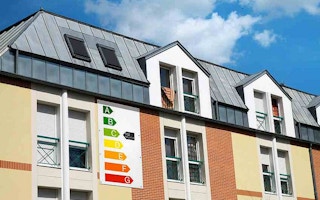Visitors to buildings in Singapore may soon be able to tell how green a building is from building energy certificates displayed at lobby or foyer areas.
The city-state’s Building and Construction Authority (BCA) is encouraging building owners to voluntarily disclose their buildings’ energy performance. For the first time, it will also name the country’s top 20 per cent energy efficient buildings in an inaugural annual Green Building report in the first quarter of next year.
This benchmarking will induce healthy competition and will result into retrofitted buildings, said the BCA.
Acting Minister for Manpower Mr Tan Chuan-jin unveiled this initiative on Friday at the BCA ‘Breakfast Talk for CEOs’ held at the Marina Bay Sands Expo and Convention Centre, and outlined three strategic goals in BCA’s new third green building masterplan for the country.
In addition to using energy labeling to improve information sharing and adoption, BCA will continue its leadership and support for green buildling advancement such as establishing industry standards with innovative solutions.
It launched new schemes - the BCA Green Mark for Healthcare Facilities and Green Mark for Laboratories - to support this effort.
The third objective is to raise engagement with the industry and community “to raise awareness, and to encourage community development to kick-start a change in energy consumption behaviour”, Tan said.
“This is perhaps the most challenging of the three goals,” he added. Besides the industry professionals such as architects and engineers, it is the tenants and occupants of the buildings who have to be more conscious of their environmental impact.
When asked by Eco-Business if such energy labeling would become mandatory in the future, BCA chief executvie John Keung said BCA “has not ruled it out”, but added that it will take a consultative and phased approach to such initiatives.
The talk, attended by chief executives and senior management professionals from the industry, was part of this year’s International Green Building Conference which convenes thought leaders and experts to discuss green building solutions.
Addressing the audience, the minister noted that the first master plan, launched in 2006, aimed for the promotion of environmental sustainability in new buildings. The second one in 2009 set a target for greening 80 per cent of Singapore’s buildings by 2030. Since then, the country has been able to make 20 per cent of Singapore’s building stock sustainable.
“We have a come long way, from having a mere number of 17 green buildings in 2005 to more than 1,650 green buildings today,” he said.
BCA’s Dr Keung also highlighted the “exponential growth of green buildings in Singapore”.
“
This addition to our suite of Green Mark schemes aims to deliver more sustainable healthcare through improved energy and resource efficiency to address the high cooling demand and heavy service water heat load that healthcare facilities require in order to maintain a stringent hygienic standard.
Dr John Keung, BCA CEO
“Besides just greening buildings and making sure the infrastructure is energy efficient, we are going to see even greater partnership with developers to encourage their tenants to embark on green operations,” he said.
BCA’s new schemes for healthcare institutions and for laboratories are the first of its kind in the tropics. Singapore’s largest community hospital, the Yishun Community Hospital, and the Seng Kang group of hospitals will be piloting the scheme.
“This addition to our suite of Green Mark schemes aims to deliver more sustainable healthcare through improved energy and resource efficiency to address the high cooling demand and heavy service water heat load that healthcare facilities require in order to maintain a stringent hygienic standard,” Dr Keung explained.
To encourage information sharing, the BCA also launched two digital platforms on Friday: the Green Mark Online Portal and the Green Mark Mobile App, which will enable a convenient way to calculate Green Mark scores. The beta version of the app is currently available for iPhone users, while Android phone users will have their own version soon.
Tan noted in his speech that green buildings help reduce carbon emissions, and so can individuals keen on sustainability. They can “enjoy energy cost savings and reap financial benefits” as well.
“Moving forward, we can all join hands to recognise that green buildings are an important piece of the puzzle towards the on-going transformation of Singapore into a sustainable and liveable global city,” he said.
Eco-Business.com’s special event coverage of the International Green Building Conference 2013 is brought to you by City Developments Limited (CDL).















